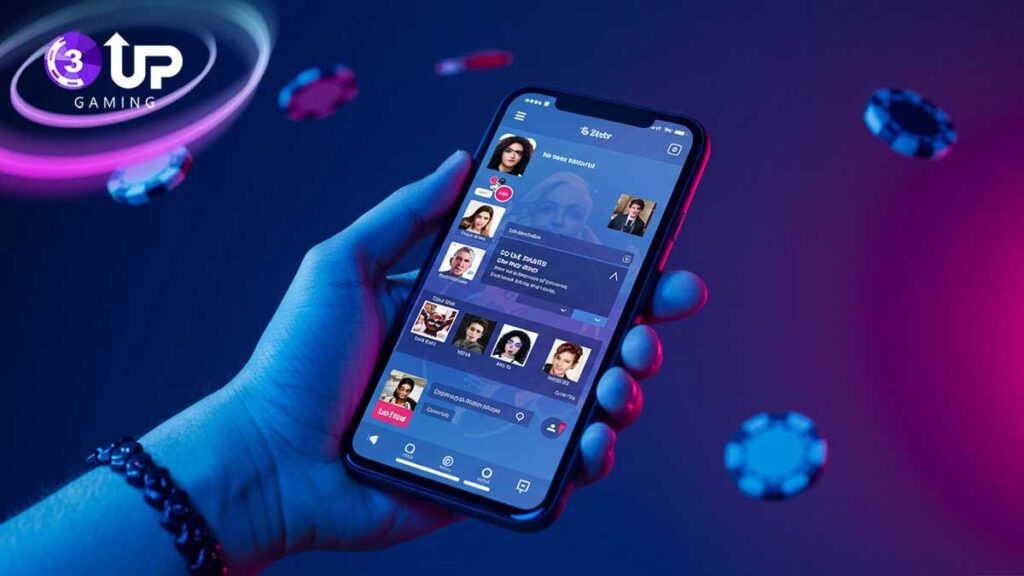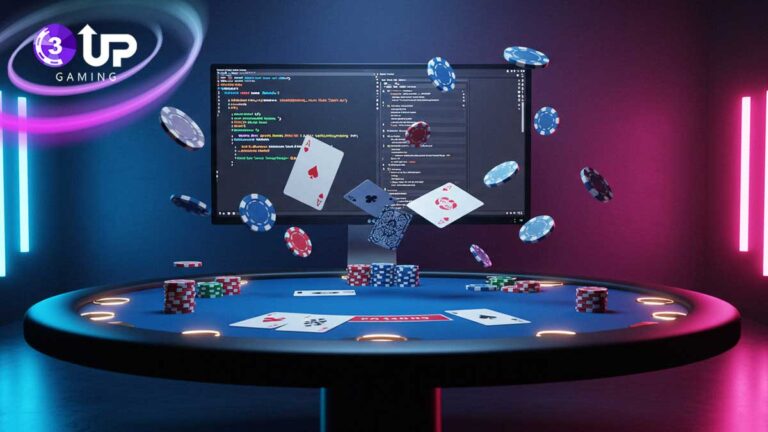Build Your Perfect Poker Platform with Custom Software! Launching an online poker platform that stands out in 2025’s crowded market takes more than a generic template. Custom poker software gives you the freedom to craft a unique, scalable, and player-focused experience. From game types to payment systems, every detail bends to your vision. Here’s how to build a poker platform that players love and keeps you ahead of the competition.
Build your perfect poker platform with custom software tailored to your unique vision and business goals. Whether you’re launching an online poker room or enhancing an existing one, custom poker software offers unmatched flexibility, scalability, and control.
From personalized game features and secure payment integration to user-friendly interfaces and real-time analytics, every element is designed to deliver a seamless and engaging player experience. Invest in a custom solution to stand out in the competitive online poker market and build a platform that meets your exact needs. Optimize your poker site today with expert custom software development!
Why Custom Poker Software Beats Off the Shelf Solutions
Ever played on a poker site that felt like a cookie-cutter copy of every other? That’s the trap of ready-made platforms. They’re fast to deploy sometimes in just 1-2 months, but they box you into rigid designs and pricey vendor updates. Custom poker software, while costing $50,000-$200,000 upfront (SoftGamings ), offers full ownership and flexibility. You control the look, feel, and mechanics, creating a brand players remember.
For example, a 2023 project I consulted on ditched a ready-made solution after it couldn’t support their unique tournament format. Going custom, they launched a platform that boosted player retention by 25% through tailored features. Custom software also scales better, letting you add games or users without vendor gatekeeping.
Mapping Out Your Poker Platform: Games, Features, and Revenue

A winning poker platform starts with a clear plan. First, choose your game types. Texas Hold’em dominates 80% of online players prefer it (PokerStars, 2024 ). Omaha draws a solid crowd, while Razz or Five Card Draw can pull in niche enthusiasts. Know your audience: casual players or high-stakes pros?
Monetization shapes your strategy. A 4-6% rake per pot is industry standard, but premium tournaments with $10-$1,000 buy-ins can drive revenue. Freemium models free play with paid perks like VIP tables widen your reach. Features like live leaderboards or social integrations keep players engaged. One platform saw a 20% jump in daily logins after adding real-time tournament rankings. Plan these early to avoid costly reworks.
Essential Features for a Standout Poker Platform
What keeps players glued to your platform? It’s an experience. Here’s what modern poker platforms need in 2025:
- Multi-Table Tournaments: Host hundreds of players across dynamic tables.
- Personalized Profiles: Let players customize avatars and track stats.
- Moderated Chat: AI or human-moderated chats for strategy or banter.
- Push Notifications: Alert players to tournaments or bonuses.
These features, tailored to your brand, create a sticky user experience. Beta-test them with real players to catch issues early. Statista reports that 60% of poker players use mobile devices, so prioritize a seamless mobile UI.
Command Your Platform: Back-End and Admin Tools
The back-end is your platform’s engine, handling game logic, user data, and transactions. A robust admin panel is your control center. Monitor live games, tweak rake settings, or ban cheaters with ease. In a 2024 case, one operator used their admin dashboard to spot a 15% engagement dip and fixed it by adjusting tournament schedules.
Key admin tools include user management, real-time analytics, and game configuration. Choose scalable tech like Node.js with MongoDB to handle thousands of concurrent players. Regular stress tests ensure your back-end holds up during peak traffic, like during a $10,000 prize pool event.
Seamless Payments: Cash, Crypto, and Wallets
Players demand fast, secure transactions. Integrate trusted options like Visa, PayPal, or Skrill for real-money play. Cryptocurrencies like Bitcoin cut transaction times by 50% compared to bank transfers (Slotegrator, 2024). A wallet system lets players store funds and move between tables without friction.
Compliance is non-negotiable. Follow PCI-DSS for card payments and KYC for user verification. One platform lost 25% of its users due to delayed withdrawals. Don’t make that mistake. Test payment flows across devices to ensure they’re bulletproof.
Fair Play Guaranteed: RNG Certification
Trust is everything in poker. A certified Random Number Generator (RNG) ensures card deals are random, preventing any “rigged” accusations. Certification from eCOGRA or iTech Labs costs $5,000-$20,000 but pays off in player loyalty (iTech Labs, 2025 ). Display the badge prominently on your site.
Quarterly RNG audits keep your platform credible. A European operator I worked with saw a 10% boost in positive reviews after showcasing their eCOGRA certification. Transparency here turns skeptics into regulars.
Fortifying Your Platform: Anti-Fraud and Anti-Cheat Measures
Real money attracts real risks. Anti-fraud tools like device fingerprinting and behavior analysis catch suspicious accounts. Anti-cheat algorithms detect bots, which plague 10% of online poker games (GammaStack, 2024). SSL encryption and GDPR compliance protect player data, especially for European users.
Penetration testing uncovers vulnerabilities before hackers do. One platform recovered from a minor breach by offering transparent communication and free credits, retaining 90% of its users. Security isn’t just tech, it’s trust.
Play Anywhere: Web, Mobile, and Multi-Language Support
Your platform must work flawlessly across devices. Web platforms offer instant access, but mobile apps drive 70% of poker revenue (Slotegrator, 2024). Use frameworks like Flutter for consistent Android and iOS apps. Multi-language support, think Portuguese for Brazil or Hindi for India, can tap into emerging markets like the 15 million poker players in India (Statista, 2024).
Test rigorously across devices. A buggy Android app cost one startup 20% of its launch users. Localization and responsive design ensure every player gets a native experience.
Agile Development: Turning Ideas into Reality

Building custom poker software follows an agile process for flexibility. Start with ideation and define your must-have features. Prototyping visualizes the UI, followed by coding in sprints. Each sprint delivers a piece, like a game lobby, for feedback. Testing ensures a bug-free launch.
A 2023 project I advised launched their MVP in 7 months by prioritizing Texas Hold’em and basic tournaments. Post-launch, they added Omaha based on player demand. Agile development keeps you on track, with full platforms taking 8-14 months.
Read More: Secure Bitcoin Poker Sites You Can Trust in 2025
Finding the Right Development Partner
Your dev team is your biggest asset or liability. Look for firms with poker expertise; check their GitHub or case studies. They should know RNG certification, gaming regulations, and scalable tech like AWS. Clear communication, weekly updates, and not radio silence, avoid disasters.
A startup I know lost $100,000 on a team that botched payment integration. Ask for references and quiz them on poker mechanics. The right partner delivers a platform that feels like an extension of your vision.
Post-Launch: Keeping Your Platform Fresh
Launch is just the start. Regular updates like new game variants or seasonal tournaments keep players engaged. Player feedback loops, like in-app surveys, guide improvements. One platform boosted retention by 18% after adding a requested “quick join” feature.
Maintenance contracts with your dev team ensure uptime and security patches. Depending on scale, budget $10,000-$30,000 annually for updates. Staying responsive to players keeps your platform thriving.
FAQ: Build Your Perfect Poker Platform with Custom Software!
- What makes custom poker software worth the investment?
Custom poker software delivers a tailored experience, from unique game rules to branded visuals. Unlike ready-made platforms, it scales with your growth by adding new games or handling 10,000+ players without hiccups. You own the code, avoiding vendor fees that can hit $20,000 annually. It’s a long-term play for standing out in a crowded market.
- How long does it take to develop a custom poker platform?
A basic platform with Texas Hold’em and core features can launch in 6-8 months. Complex platforms with multi-table tournaments, crypto payments, and mobile apps take 10-14 months. Agile sprints, 2-4 weeks each, ensure steady progress. For example, a 2024 project delivered an MVP in 7 months by focusing on high-demand features first.
- Can I integrate real-money payment systems securely?
Yes, you can integrate Visa, PayPal, Skrill, or cryptocurrencies like Bitcoin. Compliance with PCI-DSS and KYC is critical to avoid legal issues. A wallet system streamlines transactions, letting players deposit once and play across tables. Test thoroughly, one platform lost 20% of users due to payment delays in 2023.
- Is it legal to operate custom poker software?
Legality varies by region. In the U.S., states like New Jersey require licenses, while countries like Malta have clear gaming regulations. Consult legal experts and secure licenses early; costs can range from $10,000 to $100,000 depending on jurisdiction. Non-compliance risks fines or shutdowns.
- How do I update or expand my platform post-launch?
Custom platforms are built for flexibility. Add new games, like Omaha, or features like AI matchmaking, through modular updates. Budget $10,000-$30,000 yearly for maintenance and enhancements. Player feedback, via surveys or reviews, guides updates, one platform added a “quick join” feature, and saw 18% higher retention.


